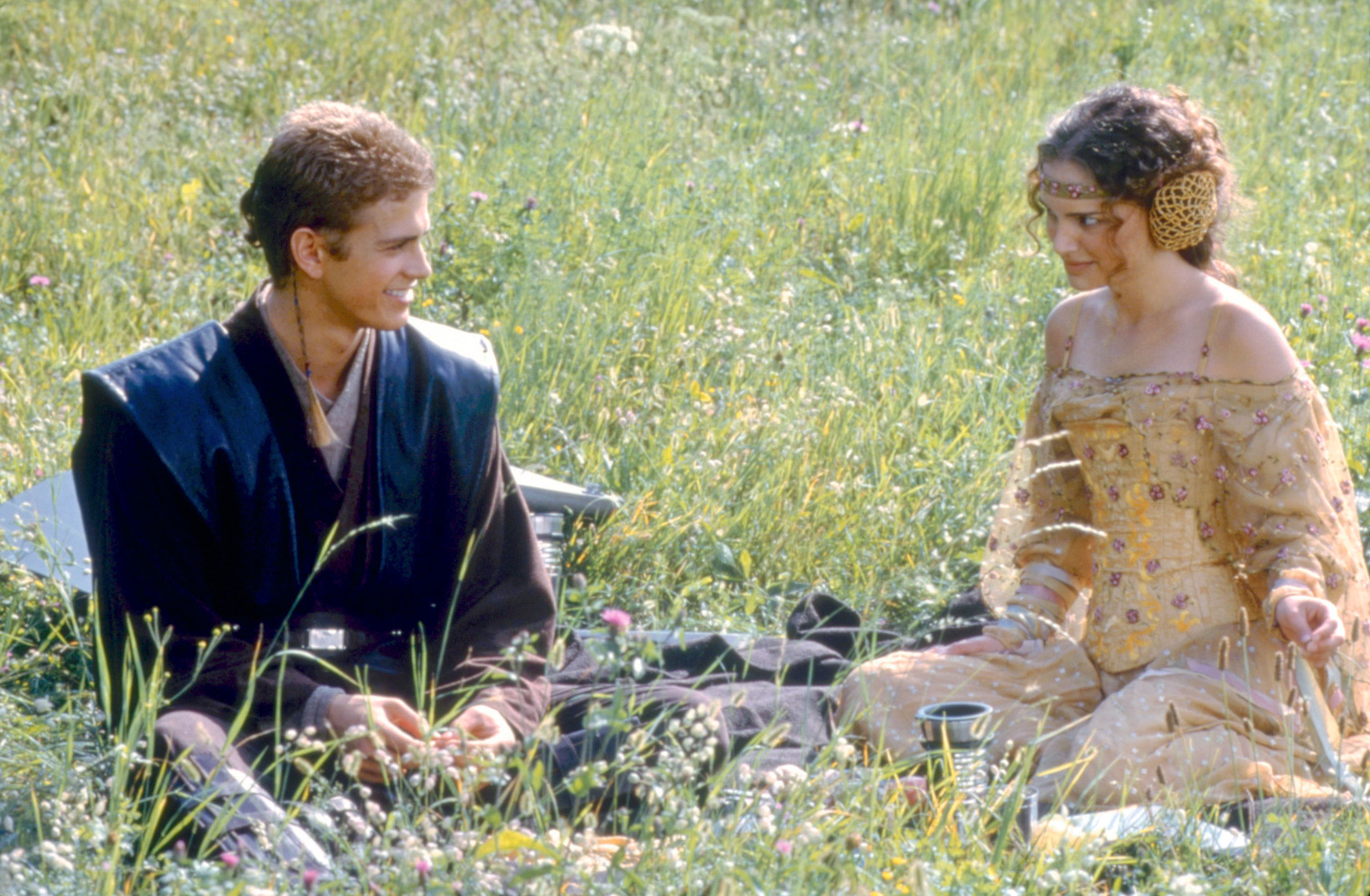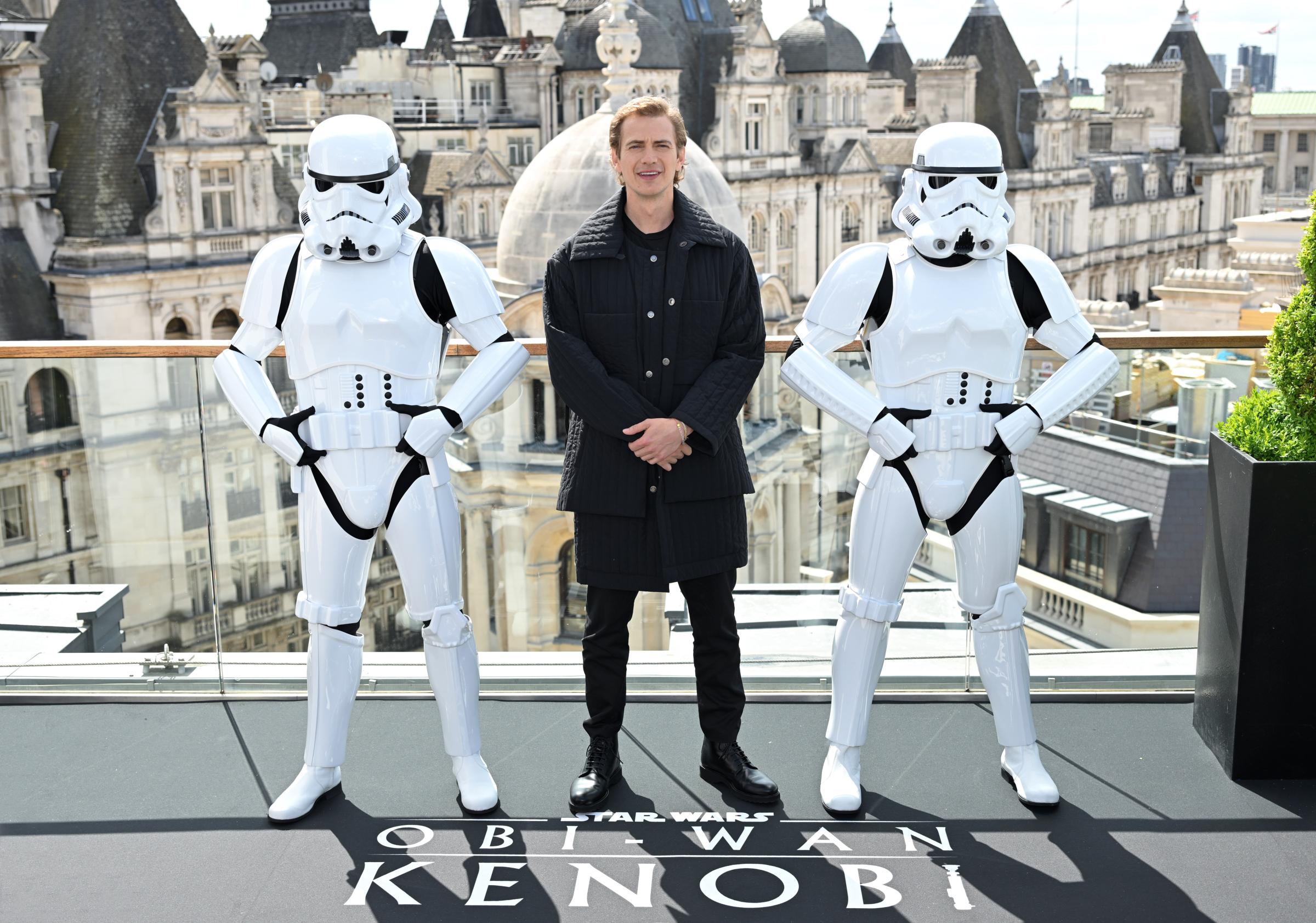
Obi-Wan Kenobi arrives on Disney+ on May 27, and with it another wave of Star Wars prequel nostalgia. When LucasFilm announced that Hayden Christensen would don the Darth Vader suit to reprise his role as Anakin Skywalker opposite Ewan McGregor’s Obi-Wan Kenobi, Star Wars die-hards met the news with joy. Casual Star Wars fans may find this confusing: Weren’t the prequel movies awful? Weren’t all those bits about the galactic senate rather dull and Jar Jar Binks the absolute worst creation to ever grace the screen? Wasn’t Christensen the most maligned actor in the much-hated series?
Well, yes. The movies were terrible—so terrible that Harrison Ford didn’t even want to acknowledge their existence when he sat down with TIME for an interview about the legacy of the franchise. But lately, a vocal subset of Star Wars fans has set out to reclaim these movies as decent, if not quite good. In doing so, they have paved the way for a Christensen comeback.
The newfound goodwill comes mainly from Millennials and Gen Zers who watched the prequels as kids, before they could scrutinize the films through a critical lens. The gratuitous CGI creatures that irked adults delighted children. Nearly two decades later, the affection lingers. In the same way that I think Space Jam is a perfect movie (even though it’s an objectively bad film), plenty of friends and colleagues will happily rewatch the Star Wars prequels over and over again, ironically or sincerely.
Squint and you’ll find things to love about these movies. John Williams’ score is epic, particularly “Duel of the Fates.” The lightsaber fight between Liam Neeson’s Qui-Gon Jinn and Ray Park’s spikey-faced Darth Maul is among the best in the franchise. Certain scenes are particularly meme-able, like Obi-Wan Kenobi telling Anakin Skywalker that he has the “higher ground” and Anakin’s cringe-worthy speech about hating sand.
Critics have pointed out that Lucas’ films were politically prescient and predicted the rise of fascist sentiment in American politics. And, of course, Ewan McGregor is handsome and charming, which is perhaps why LucasFilm has been endeavoring for 17 years to get him back on the giant lizard saddle and reprise his role as Obi-Wan Kenobi.

TIME’s Richard Corliss was an early defender of the prequels. When Attack of the Clones premiered in 2002, he wrote, “Like the army of clones deployed in Episode II, a gaggle of critics has already spread the news that the picture stinks. It doesn’t … It’s gorgeously designed and color-coordinated; the god who created this galaxy was working from a very rich palette. There’s nothing deep or emotionally grand about this enterprise, but Star Wars never occupied that part of the cinema spectrum. The series was—and remains—Lucas’s elaborate reconstruction of his Saturday-matinee memories and fantasies.”
But let’s not kid ourselves: The weakest part of the trilogy was the stilted romance between Anakin Skywalker (Hayden Christensen) and Padme Amidala (Natalie Portman). Christensen’s performance is bad, almost unforgivably so. He earned two Razzies for Episodes II and III. As A.O. Scott wrote in the New York Times when Revenge of the Sith premiered in 2005, “Hayden Christensen plays Anakin Skywalker’s descent into evil as a series of petulant bad moods.” Corliss was slightly kinder, directing most of his ire at a “stiff and humorless” Portman rather than Christensen. He largely blamed Lucas for any acting failures in the picture: “It’s a melancholy fact that the Star Wars films with the strongest acting and densest mood are The Empire Strikes Back and Return of the Jedi—the two that Lucas didn’t direct.”
Read More: We Ranked the 40 Best Star Wars Moments
Still, in recent years, some Star Wars fans have made a concerted effort to forgive Christensen. As Corliss pointed out, it’s not entirely clear that Christensen was to blame for Anakin’s failures as a character. There’s very little good acting in the prequel films, even though they feature a cohort of legendary stars, from Samuel L. Jackson to Christopher Lee. Lucas is likely the one to blame for poor performances. And young Christensen had a particularly difficult task: Show audiences how a petulant teenager evolved into the greatest villain in cinematic history. Lucas handed the heartthrob clunky dialogue and asked him to act opposite far too many CGI creatures. Christensen tried to conjure an edgy Hamlet in space. Instead he manifested a whiny brat.
Christensen perhaps suffered the most from the prequels’ failure. Lucas has made billions of dollars from the franchise, and the original films are so influential that the prequels, though poorly received at the time, cannot blemish the director’s legacy. Portman recovered from the bad prequel reviews: She won an Oscar for Black Swan and will wield Thor’s hammer as the hero of the next Thor movie. McGregor made the hit Moulin Rouge! while the Star Wars prequels were still filming and, like Portman, went on to acclaim, winning a Golden Globe for the Fargo TV series. Christensen, by contrast, hasn’t starred in a major project since the sci-fi film Jumper in 2008.

Both McGregor and Christensen appear to be acutely aware of the deleterious effect the prequels had on Christensen’s career. Much of the press tour for Obi-Wan Kenobi has centered on the reclamation of the prequels and Anakin in particular. “I found it quite hard,” McGregor told Entertainment Weekly of the reaction to the prequels. “For it to come out and get knocked so hard was personally quite difficult to deal with.”
He went on to say the tides are turning. “Now I meet the people who we made those films for, who were the kids of the time,” he said. “And our Star Wars films are their Star Wars films. In the way that Carrie Fisher and Alec Guinness and Mark Hamill and Harrison Ford’s films were ours, we’re theirs. And that’s beautiful that they were important to the kids who we made them for. It’s just so nice to finally get that wave of positivity about them.”
Hoping to capture that younger demographic, the trailers coyly tease a rematch between Anakin and Obi-Wan. LucasFilm could have put anyone inside that Vader suit. But they’re bringing back Christensen because Obi-Wan Kenobi is wracked with guilt for letting his trainee Anakin turn to the dark side, and the show will reportedly find Obi-Wan a broken man looking out for little Luke Skywalker on Tatooine. Presumably director Deborah Chow also wants to remove Vader’s helmet and show Anakin’s face at some point, scarred from his volcano-set showdown with Obi-Wan in the Revenge of the Sith. No doubt, the moment will be played as pure fan service.
So we’ve collectively decided to forgive Christensen. Good. When asked in a recent YouTube interview how he felt about the fans finally embracing him, Christensen replied, “I guess the moral of the story is patience.”
Fandoms are rarely so forgiving. The more toxic corners of the Star Wars fandom have driven other Star Wars actors like Kelly Marie Tran and Daisy Ridley off social media not even for the sin of being poor actors but for merely existing as female heroes in a film that happened to kill off fan-favorite character Luke Skywalker. Christensen is, notably, a white man, and thus representative of a demographic that’s disproportionately granted second chances. Maybe the Star Wars fandom can extend the generosity they’ve offered to Christensen to other actors in the franchise. Hopefully it won’t take them 17 years.
More Must-Reads from TIME
- Cybersecurity Experts Are Sounding the Alarm on DOGE
- Meet the 2025 Women of the Year
- The Harsh Truth About Disability Inclusion
- Why Do More Young Adults Have Cancer?
- Colman Domingo Leads With Radical Love
- How to Get Better at Doing Things Alone
- Michelle Zauner Stares Down the Darkness
Write to Eliana Dockterman at eliana.dockterman@time.com